Homepage / News Details
What are the types of disinfectants? What are the characteristics of each?
- Categroy:News
- Author:
- Origin:
- Release Time:2023-05-19 16:51
- Views:
【Summary】Common disinfectants include hypochlorous acid, chlorine dioxide, ozone, ultraviolet radiation and so on. Hypochlorite disinfectants include liquid chlorine, bleach powder, bleaching powder essence, chlorine tablets, sodium hypochlorite and other forms, mainly through HOCL disinfection.
What are the types of disinfectants? What are the characteristics of each?
【Summary】Common disinfectants include hypochlorous acid, chlorine dioxide, ozone, ultraviolet radiation and so on. Hypochlorite disinfectants include liquid chlorine, bleach powder, bleaching powder essence, chlorine tablets, sodium hypochlorite and other forms, mainly through HOCL disinfection.
- Categroy:News
- Author:
- Origin:
- Release Time:2023-05-19 16:51
- Views:
 Common disinfectants include hypochlorous acid, chlorine dioxide, ozone, ultraviolet radiation and so on. Hypochlorite disinfectants include liquid chlorine, bleach powder, bleaching powder essence, chlorine tablets, sodium hypochlorite and other forms, mainly through HOCL disinfection. The weakness of hypochlorous disinfectants is that they are prone to forming chlorinated hydrocarbons with organic matter in the water, which have been recognized to be extremely harmful to human health, and treated water can have some unpleasant odors. Hypochlorous acid disinfectant dust and the release of chlorine gas on the human respiratory tract, eyes and skin have a strong irritating effect, if accidentally splashed into the eyes and touch the skin, to immediately rinse with a lot of water. Storage environment should be cool, ventilated and dry, away from heat sources and tinder, can not be stored and transported with organic matter, acid and reducing agent, to prevent rain and sun exposure during the transportation process, loading and unloading action should be light, avoid collision and rolling.
Common disinfectants include hypochlorous acid, chlorine dioxide, ozone, ultraviolet radiation and so on. Hypochlorite disinfectants include liquid chlorine, bleach powder, bleaching powder essence, chlorine tablets, sodium hypochlorite and other forms, mainly through HOCL disinfection. The weakness of hypochlorous disinfectants is that they are prone to forming chlorinated hydrocarbons with organic matter in the water, which have been recognized to be extremely harmful to human health, and treated water can have some unpleasant odors. Hypochlorous acid disinfectant dust and the release of chlorine gas on the human respiratory tract, eyes and skin have a strong irritating effect, if accidentally splashed into the eyes and touch the skin, to immediately rinse with a lot of water. Storage environment should be cool, ventilated and dry, away from heat sources and tinder, can not be stored and transported with organic matter, acid and reducing agent, to prevent rain and sun exposure during the transportation process, loading and unloading action should be light, avoid collision and rolling.
Hypochlorous acid disinfectants often occur when disinfection is substitution reaction, which is also the use of hypochlorous acid disinfectants will produce chlorinated hydrocarbons, and ozone and chlorine dioxide disinfection is pure oxidation reaction, which can destroy the structure of organic matter, while sterilization can also improve the biodegradability of wastewater (BOD5/COD cr value), Remove some COD cr from the water. Compared with ozone or ultraviolet disinfection, hydrogen dioxide disinfection has low one-time investment and high operating cost. The latter one-time investment is high, low operating costs.
Ozone disinfection and ultraviolet disinfection can achieve the disinfection effect in a very short time. After ozone disinfection and ultraviolet disinfection, the total number of bacteria and total coliform bacteria and other microbial indicators in effluent or reuse water of secondary sink can meet the requirements. However, their disadvantage is instantaneous reaction, unable to maintain the effect and resist the breeding and reproduction of microorganisms in the pipeline. Therefore, when the reuse water system uses these two methods for disinfection, it is often necessary to add 0.05~0.1mg/L chlorine dichloride or 0.3~0.5mg/L chlorine in its outlet water to maintain sufficient residual chlorine at the end of the pipe network.
Releate News

Time of issue : 2024-04-22 08:56:03

Time of issue : 2024-04-15 16:52:27

Time of issue : 2024-04-09 10:13:04
CONTACT US
PRODUCTS
CALCIUM HYPOCHLORITE
TCCA
SDIC
BCDMH
FEEDBACK
© 1999-2018 北京网站建设有限公司 Copyright © 2012-2022 All Rights Reserved Powered by www.300.cn 冀ICP备12012949号 津公网安备 12010302002173号 Seo tag

